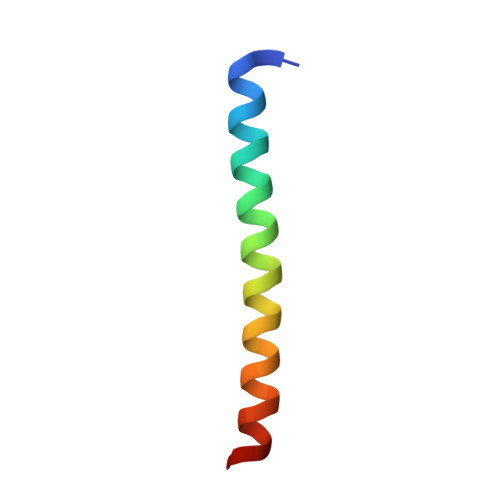Ctip Tetramer Assembly is Required for DNA-End Resection and Repair.
Davies, O.R., Forment, J.V., Sun, M., Belotserkovskaya, R., Coates, J., Galanty, Y., Demir, M., Morton, C.R., Rzechorzek, N.J., Jackson, S.P., Pellegrini, L.(2015) Nat Struct Mol Biol 22: 150
- PubMed: 25558984
- DOI: https://doi.org/10.1038/nsmb.2937
- Primary Citation of Related Structures:
4D2H - PubMed Abstract:
Mammalian CtIP protein has major roles in DNA double-strand break (DSB) repair. Although it is well established that CtIP promotes DNA-end resection in preparation for homology-dependent DSB repair, the molecular basis for this function has remained unknown. Here we show by biophysical and X-ray crystallographic analyses that the N-terminal domain of human CtIP exists as a stable homotetramer. Tetramerization results from interlocking interactions between the N-terminal extensions of CtIP's coiled-coil region, which lead to a 'dimer-of-dimers' architecture. Through interrogation of the CtIP structure, we identify a point mutation that abolishes tetramerization of the N-terminal domain while preserving dimerization in vitro. Notably, we establish that this mutation abrogates CtIP oligomer assembly in cells, thus leading to strong defects in DNA-end resection and gene conversion. These findings indicate that the CtIP tetramer architecture described here is essential for effective DSB repair by homologous recombination.
- Department of Biochemistry, University of Cambridge, Cambridge, UK.
Organizational Affiliation:

















